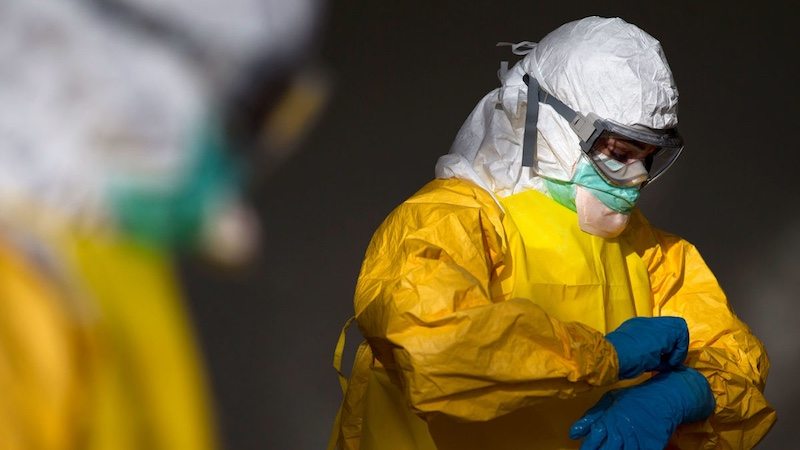Ebola
Episode #10 of the course “History of western epidemics” by Robin Tang
Named after the Ebola River, the Ebola virus was first identified in a remote village in the Democratic Republic of the Congo in 1976. Even though the virus had been present among humans for several decades, it wasn’t until the most recent outbreak in 2014 that Ebola gained worldwide attention. By far the largest outbreak to date, it led to an estimated 28,000 cases and over 11,000 deaths—at least 10 times more than that of all previous outbreaks combined.
The West Africa epidemic was caused by the Zaire Ebolavirus, the deadliest of the five strains. In March 2014, the first cases were reported to the WHO from Guinea. It soon spread to the neighboring countries of Liberia and Sierra Leone. By August, with the worst-hit countries reporting upwards of 300 new cases each week, the WHO director-general declared the outbreak a “Public Health Emergency of International Concern.”
The Ebola virus spreads through direct contact with the blood and bodily fluids of the infected. Although the first transmission from animals to humans has not yet been identified, it is widely believed that fruit bats served as the natural reservoir. The bodies of the deceased remain infectious, which led to many cases in Guinea as a result of unprotected contact with corpses during ceremonial burials. Family members often succumbed in the process of caring for the sick, especially as many did not accept the medical explanation for the disease or adhere to safety guidelines. Healthcare workers were also at great risk of exposure due to their extended contact with patients.
Flu-like symptoms including fever, fatigue, muscular pain, and severe headache appear from 2-21 days after exposure, with an average incubation period of a week. Those infected do not become contagious until symptoms emerge. In around half of the cases, internal and external bleeding occur several days after symptoms first begin. The fatality rate averages around 50%, and the leading cause of death is low blood pressure due to fluid loss. Supportive care with rehydration therapy greatly improves outcomes, but many survivors suffer from ongoing muscular and joint pain, vision problems, and liver inflammation.
Since an effective vaccine is not available, control of the outbreak relied on community management, contact tracing, and infection control, including quarantines of the sick and safe burial practices. Numerous international organizations such as the WHO, Doctors Without Borders, and the CDC provided support staff and educated local communities during the outbreak. By the winter, new cases had finally started to dwindle. To be declared Ebola-free by the WHO, a country must not have seen a new case in 42 days, or twice the length of the longest incubation period. Sierra Leone achieved the status in November 2015, and Guinea followed suit in December.
Recommended course
Epidemics in Western Society Since 1600 with Frank Snowden
Recommended book
“The Hot Zone: The Terrifying True Story of the Origins of the Ebola Virus” by Richard Preston
Share with friends

